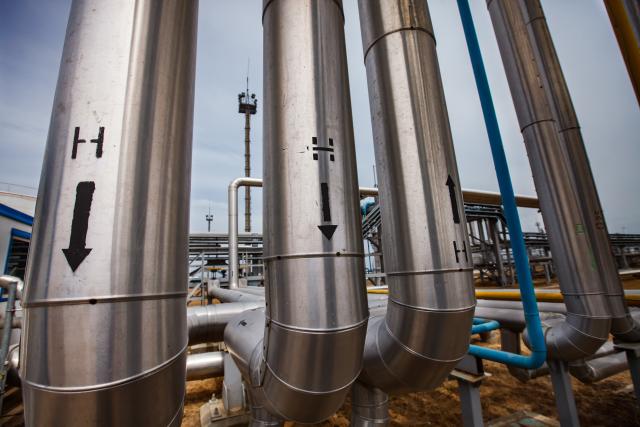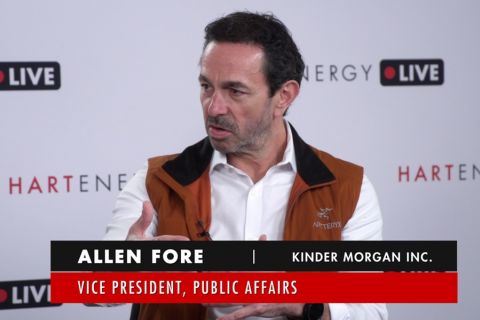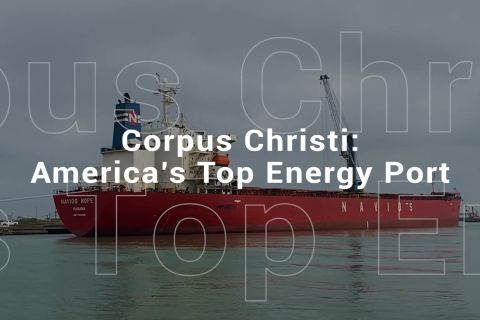
Hydrogen is used to lower the amount of sulfur in diesel fuel. (Source: Shutterstock)
Hydrogen has been championed as a solution to climate woes, serving as a route to decarbonize hard-to-abate sectors and reduce reliance on fossil fuels used in transportation.
However, as companies line up plans to ramp up production, relying on incentives and readying infrastructure, the nagging demand question remains: who will buy the low-carbon energy source?
It’s a concern for Anja Richmond, program director for the Wyoming Energy Authority. Speaking May 16 on a panel at the World Hydrogen North America conference in Houston, Richmond said hydrogen production is not a problem and technical challenges can be ironed out.
“I think we can produce more than enough hydrogen than there currently is demand,” Richmond said. “So, how do we build up [the] comfort [level] of the markets? How do we make them feel more secure in making this switch” and see the transition to clean hydrogen as a wise investment?
“That’s my biggest concern. … Where is [hydrogen] going?”
The chicken and the egg conundrum in aligning hydrogen demand with expected supply is among the biggest challenges—and opportunities—facing the nascent hydrogen industry in North America. While zero-carbon emissions hydrogen can be used to power vehicles, provide electricity and heat homes, it is used mostly today in oil refining and chemical production.
If companies utilizing hydrogen created from fossil fuel feedstock without carbon capture switched to cleaner forms of hydrogen, it could jumpstart the clean hydrogen movement.
Added opportunities in North America could arise with the potential export in an established market: hydrogen as ammonia, a key ingredient in fertilizers, into Asia and Europe.
But a lot depends on industries and suppliers’ confidence in those markets being in place.
Hydrogen and ‘first mover anxiety’
Christina Nordstrom, a hydrogen business development executive for Exxon Mobil’s low-carbon unit, is among the optimists when it comes to demand.
Exxon Mobil has made plans for a massive blue hydrogen project at its Baytown, Texas, facility that will produce 1 Bcf of hydrogen per day and permanently bury 98%—about 7 million metric tons (MMmt) annually—of the associated CO2 produced. The site will also be home to a blue ammonia production facility using some of the hydrogen produced.
Earlier this year, the company sealed agreements with Denmark’s Topsoe for hydrogen technology and Honeywell for carbon capture technology for use at the hydrogen plant. Technip Energies landed the FEED contract. The facility could become the world’s largest low-carbon hydrogen plant when it starts up by 2028, while helping Exxon cut its Scope 1 and Scope 2 emissions from the Baytown complex by about 30%.
Exxon Mobil is talking to potential customers in the U.S. Gulf Coast region, Europe and Asia, Nordstrom said.
“Everyone is looking for the solution for their hard-to-abate industry or sector,” Nordstrom said, noting companies are at different levels of readiness. “I’m optimistic that we’re going to be able to make this go, that we’re able to kind of sell out our Baytown project.”
The company plans to fuel switch at Baytown, running more of its fuel systems on lower-carbon hydrogen. The move, she said, gives the market and potential customers confidence that fuel switching is possible.
“I am kind of highly optimistic that will have demand here in the 2028-2030 timeframe,” Nordstrom said.
She admits it won’t be easy, given the fledgling market and costs.
“First mover anxiety is still there. But I think having big projects like that move forward really helps make everyone feel more confident,” Richmond said.
Demand key to scaling hydrogen
Incentivizing demand could also advance low-carbon and clean hydrogen.
Brett Perlman, CEO for the Center for Houston’s Future, explained how H2Global in Europe is creating a market.
“It’s created a role for bringing buyers and suppliers together, but also in addressing what Bill Gates calls the ‘green premium,’ getting the cost of hydrogen down,” he said.
Partnerships can be created to address some of the supply and demand side issues, but it will take time, he said, adding “I think we’re well on the way to starting to address some of these challenges.”
Demand also surfaced during talk about scaling hydrogen.
Buyers are key, according to Janice Lin, founder and president of Green Hydrogen Coalition.
“When it comes to scale, it starts with the buyers. The good news is we’ve been talking to lots and lots of buyers in many parts of the country over the last three years, and there are buyers out there that are ready to switch,” Lin said. “Now, they’re not willing to switch at any cost. It has to be cost-effective.”
A priority is lowering the cost to deliver molecules to customers. That involves aggregating multisectoral demand in certain locations to have visibility into production and needed transport and storage infrastructure, Lin said.
“A lot of that infrastructure can be shared. It can be shared by multiple end-use sectors; it can be shared by multiple producers. We’re talking blue, green, all of the above. In fact, a lot of that infrastructure already exists. That’s the way to make it the most affordable as possible. But … that leap requires bankable buyers.”
Competition as hydrogen demand driver
Perlman also sees fuel switching—from gray to blue hydrogen— as an early application for hydrogen in North America, particularly in areas with existing infrastructure, such as the U.S. Gulf Coast. The region is home to most of today’s hydrogen pipeline capacity.
Competition is one lever that can be pulled to increase demand and lower cost, Perlman said.
“When you start to see multiple producers competing for end-use customers, I think that starts to create a very interesting market,” he said. “It is probably one of the unexplored areas, if you will, in terms of how we reduce the cost and increase the demand for hydrogen … for somewhat of a monopolistic industry.”
Hydrogen blending could also allow for some flexibility when supply and demand don’t sync, Richmond said. She called it low-hanging fruit. With hydrogen blending, a small amount of hydrogen is injected into natural gas pipelines for uses that include generating heat and power.
“We have all this infrastructure and we have to figure out how to work together to start leveraging it,” Lin added. “A data point I like to tell people is that Hawaii already has 15% hydrogen in its pipeline commercially right now. Hong Kong [is] a little closer to 50%. So, this is not a crazy idea. We can be doing that really soon.”
Recommended Reading
The Jones Act: An Old Law on a Voyage to Nowhere
2024-04-12 - Keeping up with the Jones Act is a burden for the energy industry, but efforts to repeal the 104-year-old law may be dead in the water.
Kinder Morgan Exec: Building Pipelines ‘Challenging, but Manageable’
2024-04-05 - Allen Fore, vice president of public affairs for Kinder Morgan, said building anything, from a new road to an ice cream shop, can be tough but dealing with stakeholders up front can move projects along.
FERC Again Approves TC Energy Pipeline Expansion in Northwest US
2024-04-19 - The Federal Energy Regulatory Commission shot down opposition by environmental groups and states to stay TC Energy’s $75 million project.
CEO: Linde Not Affected by Latest US Green Subsidies Package Updates
2024-02-07 - Linde CEO Sanjiv Lamba on Feb. 6 said recent updates to U.S. Inflation Reduction Act subsidies for clean energy projects will not affect the company's current projects in the United States.
Global Energy Watch: Corpus Christi Earns Designation as America's Top Energy Port
2024-02-06 - The Port of Corpus Christi began operations in 1926. Strategically located near major Texas oil and gas production, the port is now the U.S.’ largest energy export gateway, with the Permian Basin in particular a key beneficiary.





